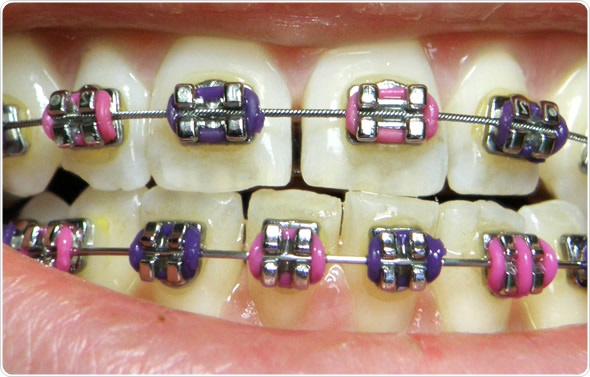How Cumming Orthodontics Can Change Your Smile with Invisalign and Braces
Comprehensive Overview to Orthodontics Procedures for Dealing With Dental Misalignments
In the realm of orthodontics, the trip to achieving a perfectly aligned smile entails a myriad of treatments tailored to correct dental imbalances. From traditional braces to unnoticeable aligners and also medical alternatives, the field of orthodontics provides a series of remedies to resolve differing levels of oral abnormalities. Recognizing the ins and outs of each procedure, including their systems, advantages, and potential downsides, is crucial in making notified decisions about one's orthodontic therapy. As we browse with the thorough overview to orthodontic treatments for correcting oral imbalances, the detailed information of each technique will certainly unravel, clarifying the path toward a useful and unified oral alignment.
Orthodontic Procedures Introduction

Along with clear aligners and traditional braces, orthodontists might also advise other treatments like headgear, palatal expanders, or retainers to resolve details alignment issues (aligners). These procedures are tailored to each person's unique demands and may entail a combination of therapies to accomplish the desired results. Regular adjustments and monitoring are essential components of orthodontic therapy to ensure progression gets on track and to make any type of required alterations along the method. By undergoing orthodontic procedures, patients can not just accomplish a straighter grin but additionally improve their total dental health and wellness and function.
Conventional Braces: How They Function
When considering orthodontic treatments for oral misalignments, traditional dental braces stand out as a tried and true method for correcting teeth positioning. Traditional dental braces include braces, wires, and bands that interact to apply continual stress on the teeth, slowly relocating them into the preferred positioning. The braces are connected to the teeth using an unique adhesive, and the cords are threaded via the brackets. By readjusting the tension of the wires, orthodontists can manage the direction and pressure applied to each tooth, assisting them right into proper placement over time.
As stress is applied to the teeth with the dental braces, the bone bordering the teeth is reshaped to support the brand-new tooth positions. Individuals will certainly need normal adjustments at the orthodontist's workplace to make certain the braces continue to use the right pressure for effective teeth activity.
Undetectable Aligners: Disadvantages and pros
These clear, custom-made trays are virtually unseen when worn, making them an enticing alternative for people looking for a more cosmetically pleasing orthodontic treatment. Patients can eliminate the aligners before consuming or cleaning their teeth, minimizing the danger of food getting stuck in the device and streamlining the cleansing process.

Surgical Orthodontic Options
Surgical treatments in orthodontics existing practical alternatives for attending to complicated oral misalignments that might not be effectively settled through traditional orthodontic treatments. While traditional dental braces and unseen aligners can fix several orthodontic issues, particular cases call for surgical intervention to attain ideal results. Surgical orthodontic options are commonly suggested for serious malocclusions, considerable jaw inconsistencies, and instances where the underlying bone framework requires adjustment to achieve appropriate placement.
One usual medical orthodontic treatment is orthognathic surgical procedure, which involves repositioning the jaws to remedy practical issues such as problem chewing or talking. This surgical treatment is often done in cooperation with an orthodontist who aids line up the teeth before and after the procedure. Surgical orthodontics might likewise involve procedures to subject influenced teeth, get rid of excess periodontal tissue, or reshape the jawbone to develop a more unified face profile.
Prior to considering surgical orthodontic options, clients go through a thorough examination to figure out the necessity and prospective benefits of such interventions. cumming orthodontics. While surgery might seem challenging, it can substantially boost both the function and aesthetic appeals of the smile in situations where conventional orthodontic therapies fail
Retainers and Post-Treatment Care

Post-treatment care entails adhering to the orthodontist's guidelines faithfully. This may consist of proper dental health methods, participating in follow-up visits, and using the retainers as suggested. Failing to adhere to post-treatment care directions can lead to regression, where the teeth slowly return towards their initial positions. Consistent retainer wear, excellent dental health, and normal oral examinations are important for preserving the results achieved via orthodontic surgical treatment and making sure the long-term stability of the remedied oral alignment.
Verdict
Finally, orthodontic treatments supply different alternatives for correcting oral imbalances. Typical braces use metal braces and cables to move teeth into proper placement. Unnoticeable aligners supply a more very discreet alternative yet may not be suitable for all cases. Surgical orthodontic choices are readily available for much more extreme misalignments. Retainers are frequently used post-treatment dental hygiene clinic to maintain the brand-new placement. In general, orthodontic procedures can effectively boost dental wellness and aesthetic appearance.
As we browse via the extensive guide to orthodontic procedures for fixing dental misalignments, the detailed information of each Learn More technique will unravel, shedding light on the course towards a unified and functional oral placement. - invisalign
One of the most usual orthodontic therapies is the use of dental braces, which are composed of metal brackets and wires that use mild pressure to gradually shift teeth right into the desired position.When taking into consideration orthodontic therapies for oral misalignments, typical braces stand out as a time-tested method for dealing with teeth positioning. Furthermore, unnoticeable aligners might not be appropriate for intricate orthodontic issues that call for more substantial teeth movement, as they are generally recommended for moderate to moderate instances. Retainers are personalized orthodontic devices designed to hold teeth in their fixed positions after the conclusion of orthodontic treatment.